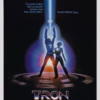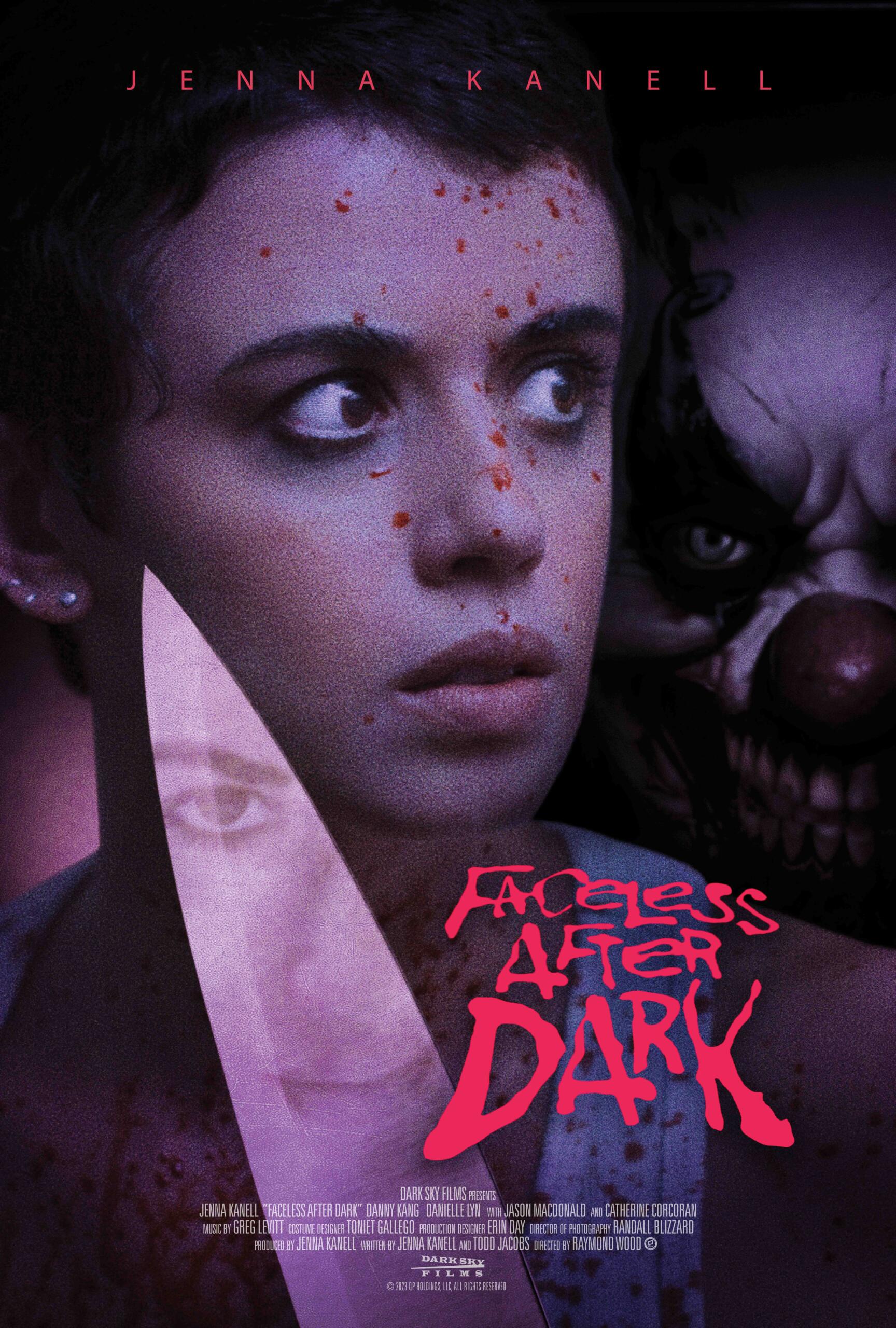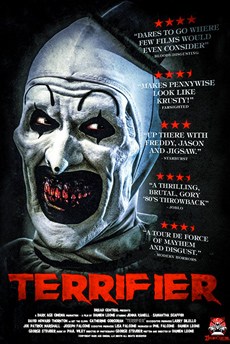Starring: Jenna Kanell, Danny Kang and Danielle Lyn
Directed by: Raymond Wood
Rated: NR
Running Time: 83 minutes
Dark Sky Films
Our Score: 3.5 out of 5 Stars
Has horror even been this meta? “Bodies Bodies Bodies,” “X,” “One Cut of the Dead,” and “Totally Killer” are just a few of the meta horror movies from the past couple of years that I can think of off the top of my head. It’s been an interesting subgenre for decades, but it seems to have crescendoed recently. However, have we ever had an actor or actress in a newly beloved horror film take on their own success through the meta medium? After several film festivals, “Terrifier” began making the rounds in 2018. Since then, and thanks to the highly successful sequel, “Terrifier 2,” Art the Clown is slowly becoming a household slasher name and Jenna Kanell’s career has taken off. I’ve seen Kanell once a year in one film or another and she has this dangerous, yet fun magnetism about her. This is basically what “Faceless After Dark” is.
Bowie (Jenna Kanell) is famous after starring in a film where she dukes it out with a sociopathic killer clown. It leads to more horror film offers, conventions on weekends and an internet buzz that seems inescapable. But it isn’t the boost to her career she was expecting. She doesn’t like the convention circuit, she doesn’t like being typecast as the final girl, she doesn’t like the lack of pay, she doesn’t like that her creative ideas and aspirations are ignored and she definitely doesn’t like the daily parade of older, uglier, fatter and hideous men sliding into her DMs. This frustration builds and builds until one night, a person imitating the sociopathic killer clown from Bowie’s famous film enters her home during another frustrating night of writer’s block. However, she may have just found her inspiration.
“Faceless After Dark ” blurs the lines so much between Kanell/Bowie, we’re unsure about quite a lot as the film progresses. We enjoy watching Bowie getting vengeance, but how much of this is entrenched in Kanell’s beliefs and existence within the artist and audience dynamic? There aren’t too many clues during Bowie’s blood rage to mine out a direct interpretation of Kanell’s attitudes. She might actually be a true sociopath if that was the case, but the film does have a very cathartic nature to it. We may not understand the strife on screen, but we understand how social media, the constant negativity it pours into our lives, and the contemporary world around us becomes more and more of a burden the more we allow our lives to bleed into social media. That’s when the mess of the world feels more tangible than other issues in our life that we can actually handle and change. It’s a human breaking point of needing to lash out when the world feels like it’s lashing you daily.
There’s a lot of pondering going on behind Kanell’s eyes, whether it’s while she checks her phone, edits video footage or stares with pure determination into the camera during a strobe light montage of violent imagery. On top of Kanell’s mysteriousness, “Faceless After Dark” makes a few interesting remarks about the slasher genre. The title slasher, whether it be Freddy Krueger, Jason Vorhees or even Art the Clown, always seems to be given the true love and adoration while the love and adoration for final girls like Bowie/Kanell may be at times genuine, but sometimes sexually motivated and overtly creepy. It’s also interesting that many slashers simply kill to kill, sometimes indiscriminately or, as it was stated for years, because they had sex. We still love those male slashes for it. In “Faceless After Dark,” it’s almost like Bowie needs an emotional excuse instead of indiscriminate slashing. Without that linchpin, we risk not liking her. Odd, isn’t it?
“Faceless After Dark” is a suitable slasher, but is way better as the meta slasher it angles to be. If you don’t know Kanell and the “Terrifier” franchise, I doubt you’d understand a lot of the film and I also doubt you’d be interested in this film in the first place. Led by Kanell, who may deserve her own slasher series after this, “Faceless After Dark” is a vicious spectacle that will potentially have genre fans questioning their own fandom and what the film ultimately represents.



